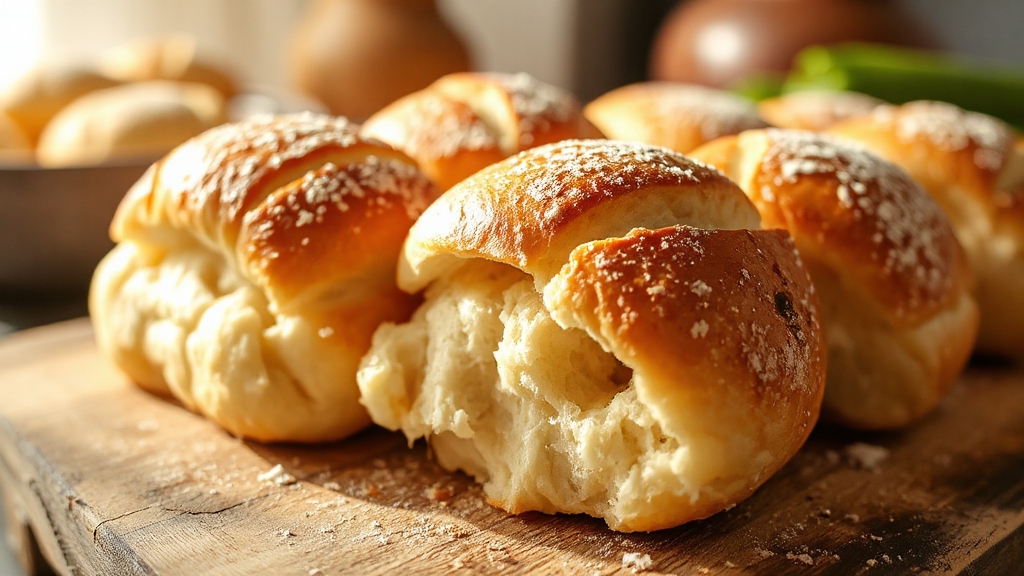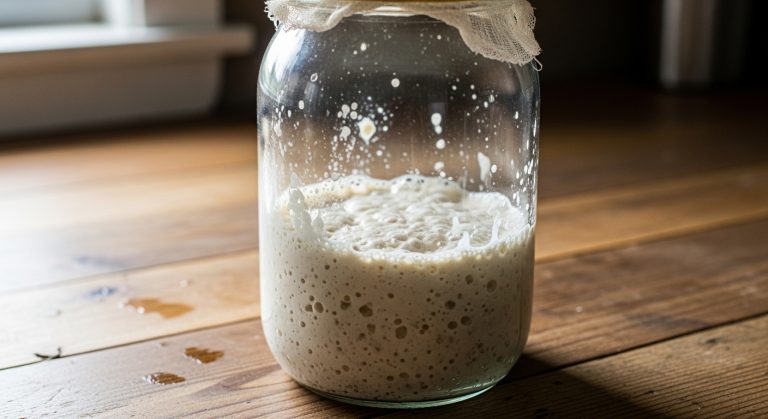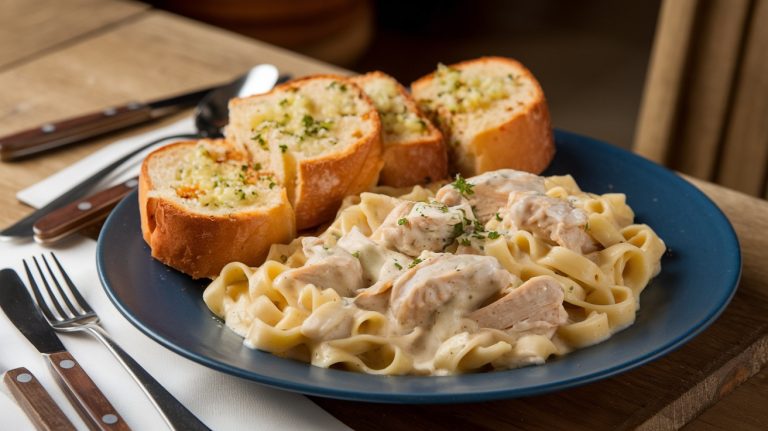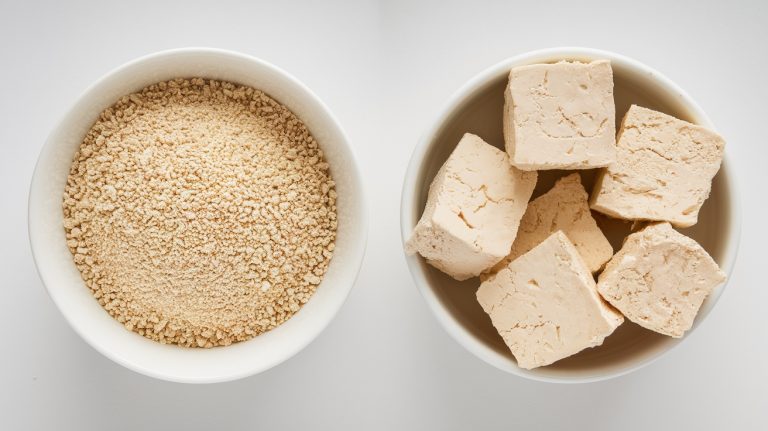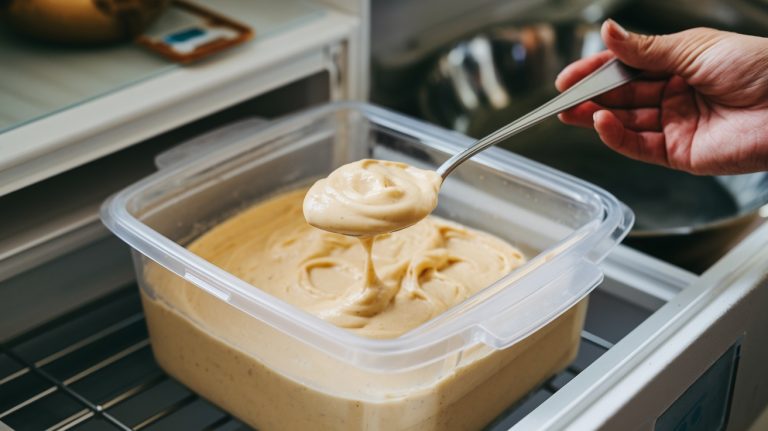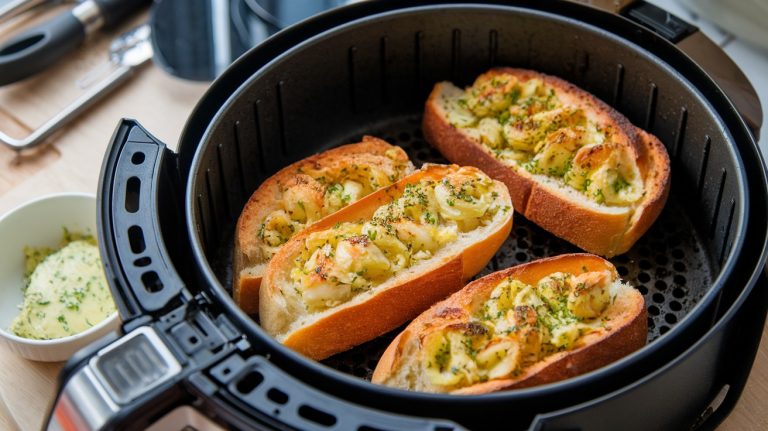Portuguese Roll Recipe: Crusty Outside, Dreamy Inside
To make authentic Portuguese rolls, start by activating yeast in lukewarm water with sugar. Mix strong white bread flour, salt, butter, and water to form a sticky, elastic dough, then knead thoroughly using a spiral hook.
Let the dough ferment in a warm, humid place until doubled. Shape into balls, rest, flatten, crease, and fold into half-moons. Bake on a hot stone with steam for a crisp crust and fluffy crumb. Keep going for detailed shaping and baking tips.
Key Takeaways
- Use strong white bread flour and active dry yeast activated in lukewarm water with sugar for authentic Portuguese roll dough.
- Knead dough for about 10 minutes until smooth and elastic, performing the windowpane test for gluten development.
- Ferment dough in a warm, humid environment (75–90°F) until doubled, with bulk fermentation and intermediate proofs.
- Shape dough into 8–12 portions, roll into balls, rest, then flatten, crease, fold into half-moon shapes for traditional papo secos.
- Bake rolls on a preheated stone at 425°F with steam, resting dough before baking and cooling on wire rack for crust crispness.
Complete Recipe Table for Portuguese Roll
| Ingredients | Process |
|---|---|
| 5 cups (520-600g) very strong white bread flour | Mix with salt in a large bowl, adding extra during kneading if needed |
| 1 packet (7g) active dry or instant yeast | Activate in lukewarm water with sugar for 5-10 minutes until frothy |
| 1.5 cups lukewarm water (105-110°F) | Use to activate yeast and form dough base |
| 1-2 teaspoons sugar | Add to water for yeast activation |
| ½ cup lukewarm milk (optional) | Incorporate for enrichment and browning |
| 2-2.5 tablespoons butter | Add for tenderness and flavor |
| 1-2 teaspoons salt | Mix with flour for flavor and dough strength |
Ingredients for Authentic Portuguese Rolls
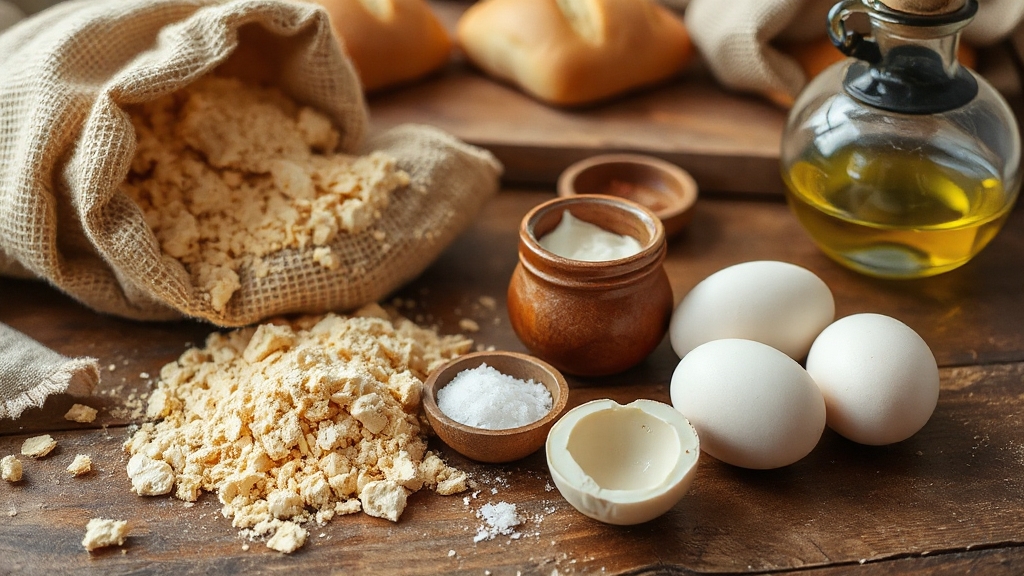
Although you might be tempted to use all-purpose flour, opting for very strong white bread flour will give your Portuguese rolls the ideal crusty exterior and chewy interior that defines an authentic papo seco.
Choosing very strong white bread flour ensures the perfect crust and chewiness in authentic Portuguese rolls.
Use about 5 cups (520–600 grams) of this bread flour, adding extra during kneading if needed to adjust dough consistency. Knead for 15 minutes until the dough is airy, smooth, elastic, and easy to work with.
For leavening, choose active dry or instant yeast—typically one packet (7 grams).
Activate active dry yeast in lukewarm water (105–110°F) with 1–2 teaspoons sugar to ensure proper rising.
Incorporate about 1.5 cups lukewarm water; optionally, add ½ cup lukewarm milk for enrichment and browning.
Add 2 to 2.5 tablespoons butter for tenderness and 1 to 2 teaspoons salt for flavor and dough strength.
These ingredients together create the balanced foundation for authentic Portuguese rolls.
Preparing and Kneading the Dough
When you begin mixing the dough, start at a low speed to combine all ingredients evenly before increasing to a medium-high speed for about two minutes; this helps the dough pull away from the bowl and form a slightly sticky ball essential for gluten development. Using a spiral dough hook can reduce kneading time and improve dough elasticity during this process.
Continue kneading for approximately ten minutes until the dough is smooth and elastic. If kneading by hand, work on a lightly floured surface to prevent sticking without adding excess flour. Use folding techniques like “slap & fold” to strengthen the gluten network.
Your dough should pass the windowpane test, showing elasticity. After kneading, gently punch down to release air, then shape into a log for even portioning.
Maintaining a sticky yet elastic texture ensures proper hydration and dough strength for the next steps. Using very strong white bread flour is essential to achieve the characteristic texture and flavor of traditional Portuguese rolls.
Fermentation and Proving Process
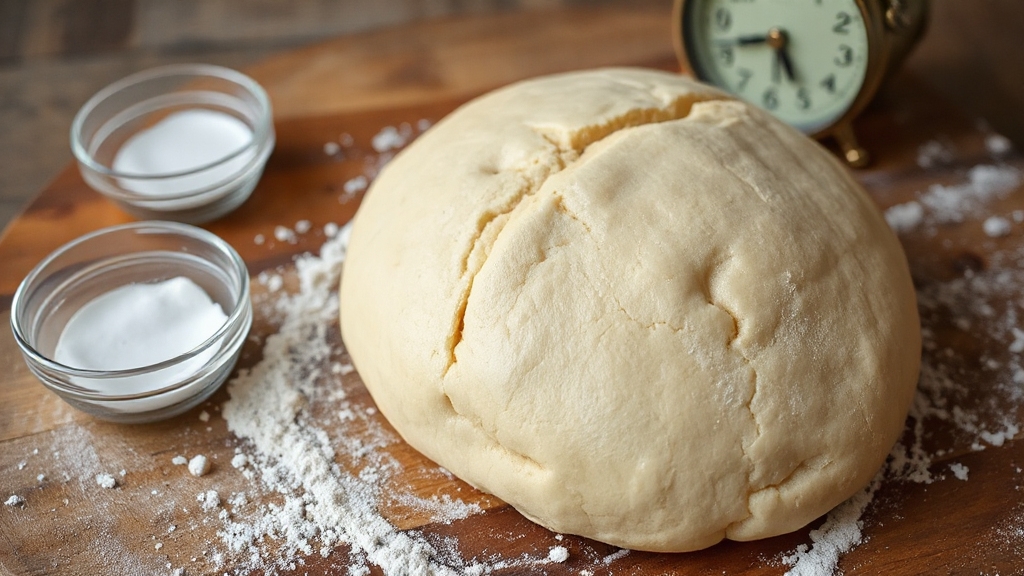
Since proper fermentation is critical for developing flavor and texture, you’ll start by placing the kneaded dough into a large greased bowl, covering it, and letting it rest in a warm environment between 75°F and 90°F. This process, called fermentation, is essential as yeast produces carbon dioxide and alcohol, which contribute to the dough’s flavor and texture.
Using a mixer with a powerful motor can improve dough consistency before fermentation. Allow the dough to double in size during this bulk fermentation, which takes about 1.5 to 3 hours depending on temperature.
Afterward, gently fold the dough to redistribute gases and prove again for 30 minutes. Maintain warmth and humidity throughout to prevent drying and encourage yeast activity, ensuring a smooth, elastic dough with air bubbles.
| Fermentation Stage | Temperature Range | Duration |
|---|---|---|
| Bulk Fermentation | 75°F – 90°F | 1.5 – 3 hours |
| Intermediate Proof | Warm, humid | 30 minutes |
| Final Proofing | Warm, humid | 45 minutes |
Shaping and Forming Traditional Papo Secos
After the dough has properly fermented and proved, it’s time to shape it into the traditional Papo Secos rolls. Divide the dough into 8 to 12 equal portions, about 120 grams each.
Lightly flour your hands and roll each portion on the work surface in a cupped hand motion about 40 times to form smooth balls. Place these on a floured towel or baker’s couche, cover, and let rest 10-20 minutes. This resting period allows for gluten relaxation, which eases further processing. Using a linen couche helps maintain dough shape by providing proper airflow during this resting phase.
Flatten each ball into a 6-inch disc, then make a deep crease across the center with the side of your hand or a spoon. Elongate the dough slightly, fold it over along the crease into a half-moon, and pinch the ends into pointed tips.
Arrange seam-side down on a floured couche for proofing, spaced apart to maintain shape. Proper spacing ensures even rising and prevents dough from sticking during the final proof.
Baking Tips for Perfect Portuguese Rolls
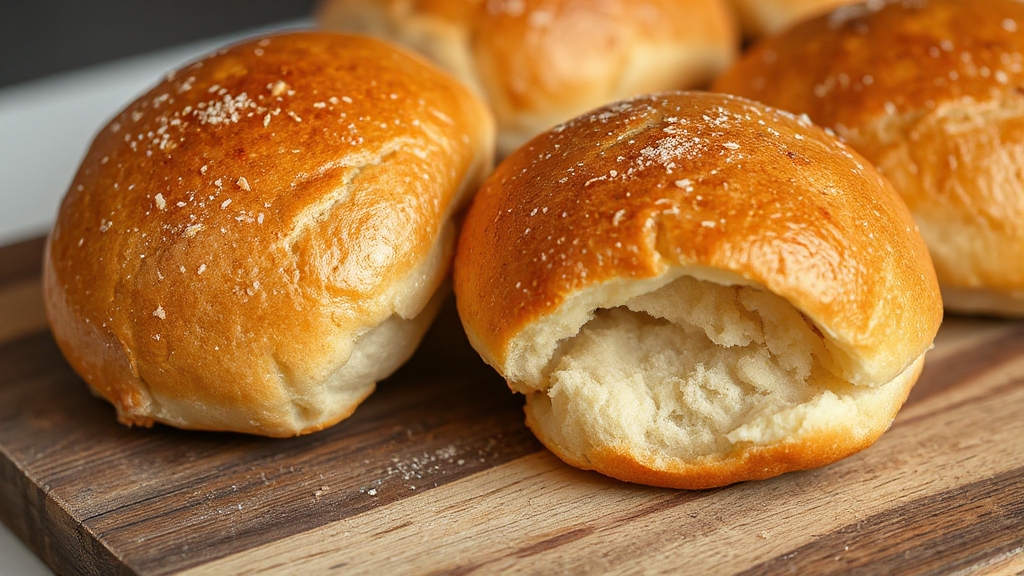
To achieve the perfect Portuguese rolls, you’ll need to carefully manage your oven setup and temperature. Start by preheating your oven to 500°F (260°C) with a baking stone in the middle rack to ensure even heat. Using a stand mixer or hand mixing helps knead the dough to the right elasticity before baking, which is essential for the rolls’ texture.
Place an empty metal tray on a lower rack for steam. When you load the rolls, reduce the temperature to 425°F (218°C) and pour a cup of hot water into the tray to generate steam, then quickly close the door. This steam blast for about 10 minutes promotes a crispy yet tender crust.
Dust your baking surface with cornmeal, place rolls seam-side up, and create surface folds for shape and texture. Allow the rolls to rest for 15 minutes before baking to ensure proper dough rising.
After baking, cool rolls on a wire rack to maintain crust crispness before storing.
Frequently Asked Questions
Can I Use Whole Wheat Flour Instead of Bread Flour for These Rolls?
You absolutely can, but be ready for a wild ride! Whole wheat flour demands more water—add it slowly to keep the dough workable. Expect your dough to be denser and less stretchy since bran cuts gluten strands.
Use longer autolyse and fermentation times to soften the crumb. Mixing whole wheat with bread flour helps balance texture. Consider adding fat for tenderness.
Adjust kneading and hydration carefully to avoid dry, tough rolls.
How Should I Store Leftover Portuguese Rolls to Keep Them Fresh?
To keep leftover rolls fresh, store them in a cool, dark, and dry place like a pantry or bread box. Wrap them tightly in their original packaging or an airtight container to prevent air exposure. Avoid heat and sunlight.
If you refrigerate in high humidity, wrap rolls well to avoid drying. For longer storage, freeze fully cooled rolls in airtight bags, then reheat directly from frozen in a 350°F oven to restore crust.
Are There Gluten-Free Alternatives to Make Portuguese Rolls?
Gluten-free greatness grows with grains like millet and sorghum, giving you a mild, manageable base.
You’ll blend tapioca and potato starches for elasticity and a crisp crust.
Add psyllium husks and xanthan gum to bind and boost dough structure.
Use instant yeast for rise, and adjust hydration for moisture.
Olive oil adds softness without dairy.
This combination crafts rolls that closely mimic traditional texture and taste, ensuring gluten-free success.
What Are Popular Fillings or Sandwiches Made With Papo Secos?
You’ll find that popular fillings for papo secos include bifanas—thin pork slices marinated with white wine and paprika—and prego, which is grilled steak. Pulled pork works great too, thanks to the roll’s airy interior that soaks up juices.
For a deli twist, use turkey or roast beef slices. Don’t overlook simple options like butter or jam, which highlight the roll’s crisp crust and soft inside perfectly.
Can I Freeze Shaped Dough Before Baking the Rolls Later?
Yes, you can freeze shaped dough before baking later. After shaping rolls, freeze them on a parchment-lined tray to keep their form, then transfer to airtight bags or containers. Wrap dough tightly to prevent freezer burn.
Thaw rolls slowly in the fridge or at room temperature, then allow a final proof before baking. Avoid freezing dough before shaping, and don’t refreeze once thawed to maintain yeast activity and dough quality.
Your Kitchen, a Portuguese Bakery
Now that you’ve mastered every step—from mixing the ingredients to shaping those perfect papo secos—you’re just moments away from baking rolls so delicious they could stop time. Remember to knead thoroughly, let the dough rise properly, and bake with care to achieve that golden crust and soft interior.
Follow these precise steps, and you’ll enjoy authentic Portuguese rolls that bring a bakery’s magic right into your kitchen every single time.

